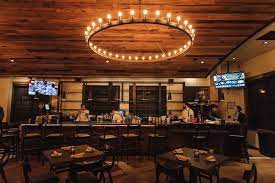The Power of Baffle Acoustique
In a world filled with noise pollution, finding solace in quiet spaces has become increasingly difficult. Whether it’s in a bustling office environment, a noisy restaurant, or a busy classroom, unwanted sound can significantly impact our well-being and productivity. This is where baffle acoustique comes into play.
Understanding Acoustics
Acoustics is the science of sound and how it behaves in different environments. It encompasses the study of sound production, transmission, and reception. In architectural and interior design, acoustics play a crucial role in creating comfortable and functional spaces by controlling noise levels and enhancing sound quality.
Importance of Sound Control
Excessive noise can have detrimental effects on health, including increased stress levels, reduced concentration, and even hearing damage over time. Therefore, sound control is essential not only for comfort but also for overall well-being in various settings.
Types of Baffle Acoustique
There are several types of baffle acoustique available, each with its unique characteristics and applications. Common types include fabric baffles, wood baffles, and metal baffles.
- Fabric Baffles: These are lightweight, versatile, and highly effective in absorbing sound waves. They come in various colors and designs, making them suitable for diverse architectural styles.
- Wood Baffles: Known for their aesthetic appeal and durability, wood baffles add warmth and elegance to interior spaces while effectively reducing reverberation and echo.
- Metal Baffles: Ideal for industrial and commercial settings, metal baffles offer robust sound control solutions with options for customization in terms of size, shape, and finish.
Benefits of Baffle Acoustique
The benefits of incorporating baffle acoustique into architectural design are manifold. Not only do they enhance acoustic comfort by reducing noise levels and improving speech intelligibility, but they also contribute to aesthetic enhancement, environmental sustainability, and overall occupant satisfaction.
Applications of Baffle Acoustique
Baffle acoustique finds applications in various settings, including:
- Offices
- Educational institutions
- Restaurants
- Auditoriums
- Gyms
- Recording studios
- Healthcare facilities
Factors to Consider When Choosing Baffle Acoustique
When selecting baffle acoustique for a particular space, several factors should be taken into account, including:
- Acoustic requirements
- Aesthetic preferences
- Budget constraints
- Installation feasibility
- Environmental considerations
Installation Process
The installation of baffle acoustique typically involves the following steps:
- Assessment of acoustic needs
- Selection of appropriate baffle type and design
- Site preparation and measurement
- Installation of suspension systems (if required)
- Mounting of baffles according to design specifications
- Quality assurance and testing
Maintenance Tips
To ensure optimal performance and longevity of baffle acoustique, regular maintenance is essential. This may include:
- Dusting or vacuuming fabric baffles
- Cleaning wood or metal baffles with a damp cloth
- Inspecting suspension systems for signs of wear or damage
- Repairing or replacing damaged baffles as needed
Cost Analysis
The cost of baffle acoustique varies depending on factors such as material, size, quantity, and installation complexity. While initial investment may seem significant, the long-term benefits in terms of improved acoustics and occupant satisfaction often outweigh the costs.
Environmental Impact
Many manufacturers now offer eco-friendly baffle acoustique made from sustainable materials and production processes. By choosing environmentally responsible options, architects and designers can minimize their projects’ carbon footprint and contribute to a healthier planet.
Future Trends in Acoustic Technology
As technology advances, so too does the field of acoustics. Future trends may include:
- Integration of smart acoustic solutions
- Development of biodegradable acoustic materials
- Use of virtual reality for acoustic simulation and design optimization
Case Studies
Several real-world examples illustrate the effectiveness of baffle acoustique in diverse applications. These case studies highlight successful implementation strategies and measurable outcomes in terms of improved acoustics and user satisfaction.
Expert Recommendations
Leading acoustical engineers and designers emphasize the importance of prioritizing acoustic comfort in architectural projects. Their recommendations include:
- Conducting thorough acoustic assessments early in the design process
- Integrating sound-absorbing materials and design elements strategically
- Collaborating with experienced acoustic consultants to achieve optimal results
Conclusion
Baffle acoustique represents a powerful tool in the pursuit of acoustic comfort and quality in built environments. By understanding the principles of sound control, selecting appropriate materials, and implementing effective design strategies, architects and designers can create spaces that foster productivity, well-being, and enjoyment for all occupants.
FAQs
How do fabric baffles differ from other types of baffle acoustique?
Fabric baffles are lightweight, flexible, and offer a wide range of design options compared to wood or metal baffles. They are highly effective in absorbing sound and can be easily customized to suit different aesthetic preferences.
Are baffle acoustique suitable for outdoor applications?
While baffle acoustique are primarily designed for indoor use, some specialized outdoor baffles are available for controlling noise pollution in outdoor environments such as parks, plazas, and transportation hubs.
Can baffle acoustique be retrofitted into existing buildings?
Yes, baffle acoustique can be retrofitted into existing buildings to improve acoustic performance. However, careful consideration should be given to compatibility with the existing architectural elements and structural constraints.
What maintenance tasks are required for wood baffles?
Wood baffles may require occasional cleaning with a damp cloth to remove dust and dirt buildup. Additionally, inspecting for signs of wear or damage and applying protective finishes as needed can help prolong their lifespan.
Are there any health benefits associated with using baffle acoustique?
Improved acoustics can contribute to reduced stress levels, enhanced concentration, and better overall well-being for occupants in various settings. By creating quieter and more comfortable environments, baffle acoustique can positively impact health outcomes.




